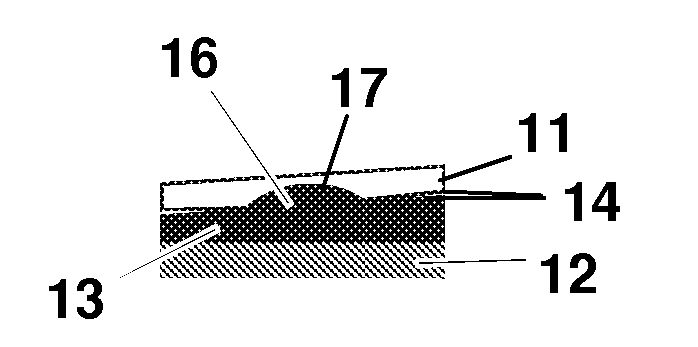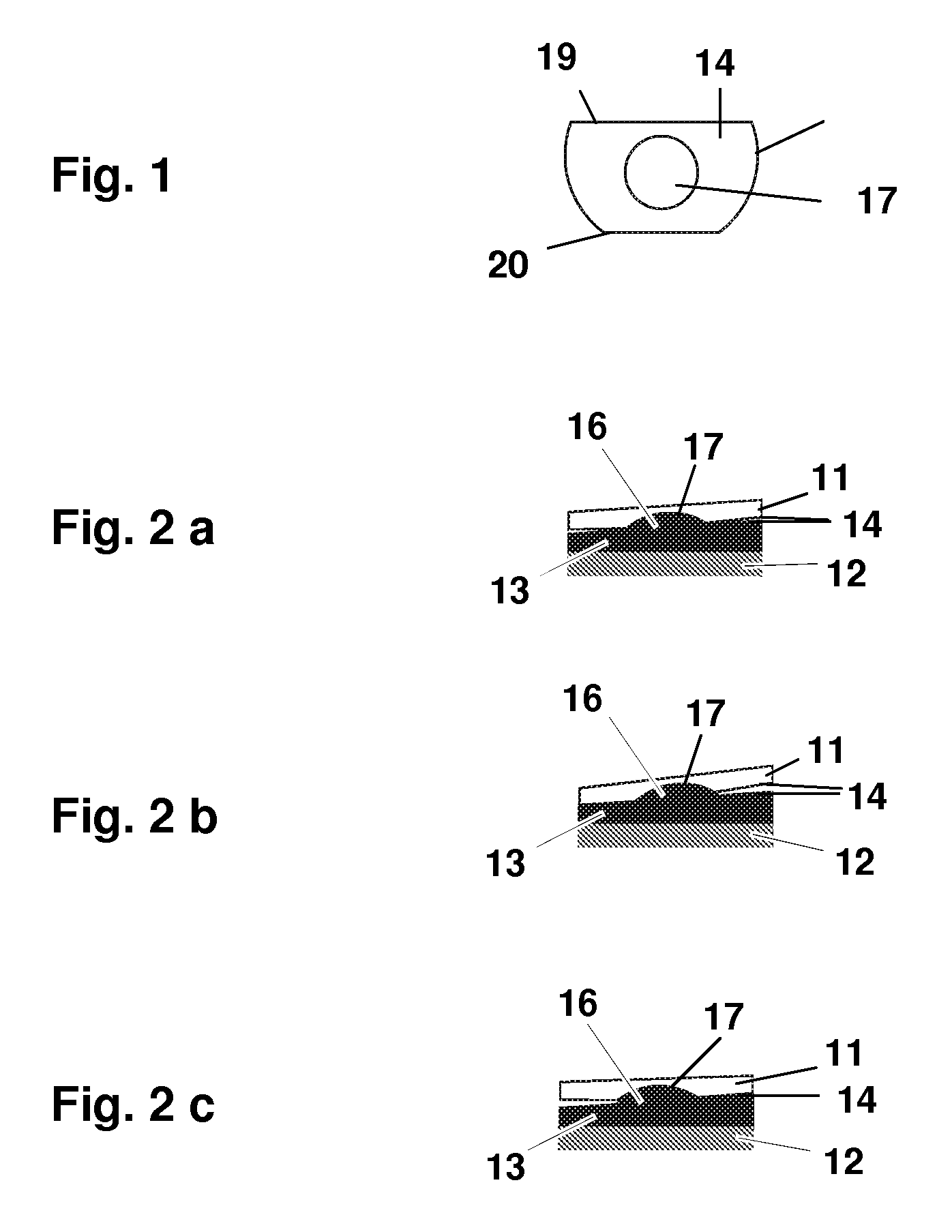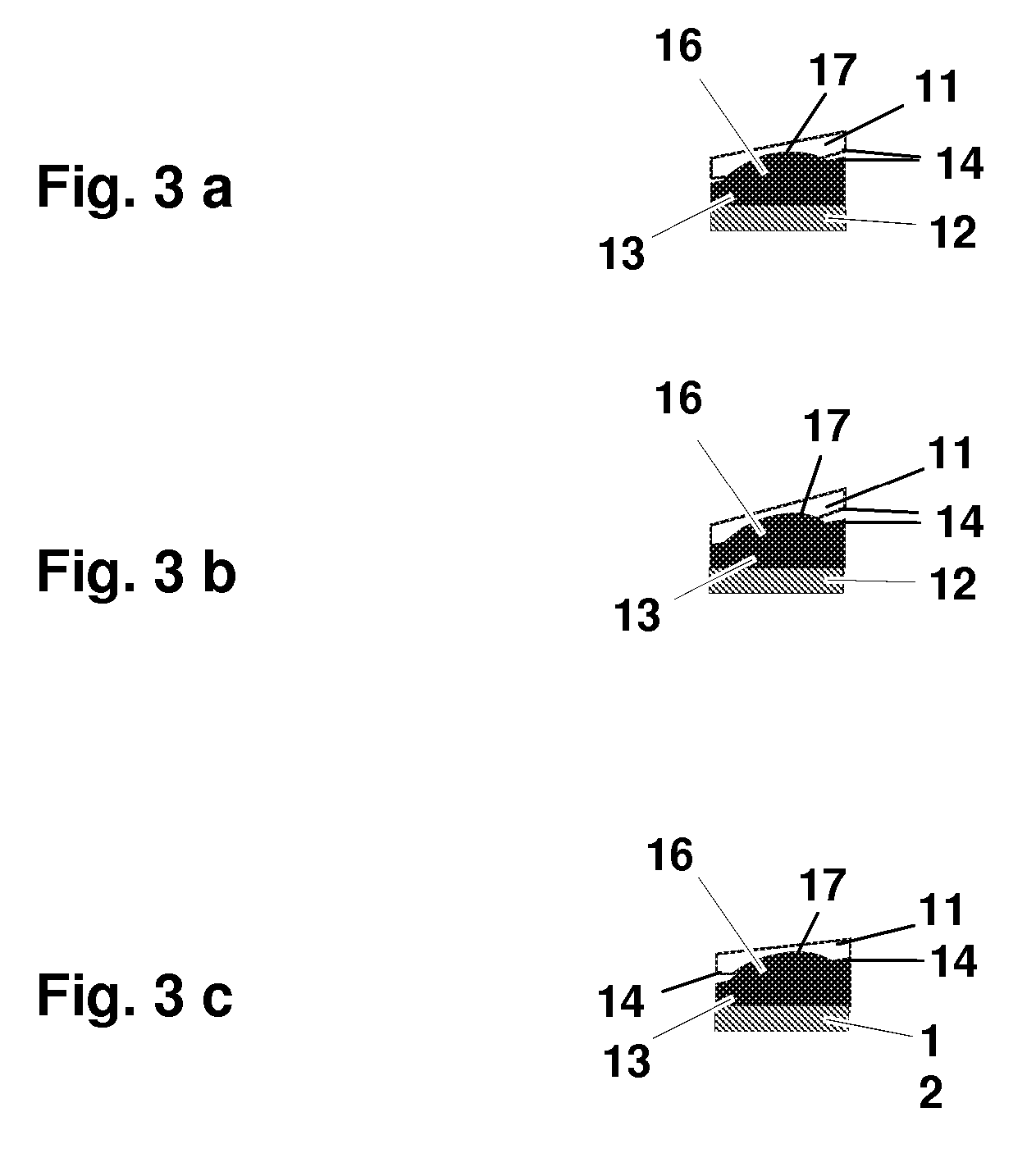Angled sliding core, also as part of an intervertebral disc prosthesis, for the lumbar and cervical spine
a technology of intervertebral discs and sliding cores, which is applied in the field of intervertebral disc prosthesis, can solve the problems of increasing surgical effort, irritating neural structures, and developing new materials with greater longevity, so as to minimize the risk of fracturing the vertebrae body, maximize the area, and optimize the lordosis and positioning of the sliding area
- Summary
- Abstract
- Description
- Claims
- Application Information
AI Technical Summary
Benefits of technology
Problems solved by technology
Method used
Image
Examples
Embodiment Construction
[0107]FIG. 1 shows a view of the inside of a sliding partner 11, 12 with a concavity 17, which is surrounded by a edge 14. The shape of the concavity 17 corresponds to the recess of a sphere. A sliding partner 11, 12, whose outer shape tapers off from the dorsal side 19, to the ventral side 20 is intended for the lumbar spine. For the cervical spine the outer shape tapers off from ventral to dorsal. In the schematic view, only dorsal and ventral sides need to be exchanged. In the depicted design, the tapering off takes place circularly; other shapes are feasible. FIG. 6 a-c show further designs of the outer shape of the upper and lower sliding partner 11, 12.
[0108]FIGS. 2 a-c show a schematic view of a median section of a two part intervertebral disc prosthesis, as per invention, with an angled sliding core 13 and upper and lower sliding partner 11, 12. Lower sliding partner 12 and angled sliding core 13 can be constructed in one piece, permanently or permanently but reversibly ass...
PUM
| Property | Measurement | Unit |
|---|---|---|
| Length | aaaaa | aaaaa |
| Fraction | aaaaa | aaaaa |
| Fraction | aaaaa | aaaaa |
Abstract
Description
Claims
Application Information
 Login to View More
Login to View More - R&D
- Intellectual Property
- Life Sciences
- Materials
- Tech Scout
- Unparalleled Data Quality
- Higher Quality Content
- 60% Fewer Hallucinations
Browse by: Latest US Patents, China's latest patents, Technical Efficacy Thesaurus, Application Domain, Technology Topic, Popular Technical Reports.
© 2025 PatSnap. All rights reserved.Legal|Privacy policy|Modern Slavery Act Transparency Statement|Sitemap|About US| Contact US: help@patsnap.com



